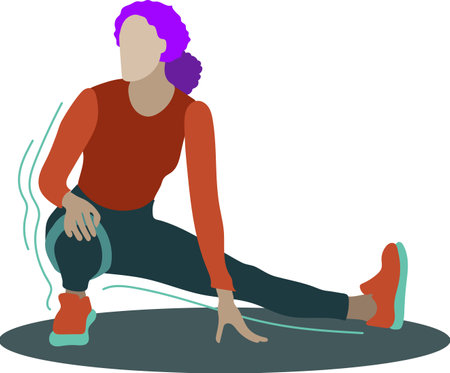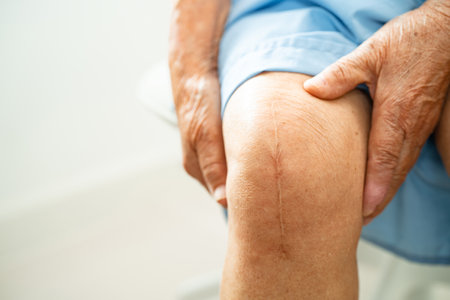Introduction to Senior Home Modifications
As the American population ages, more families are looking for ways to help their loved ones live safely and comfortably at home. Adapting a house for an older adult is about much more than just adding grab bars or ramps. Today, senior home modifications must strike a balance between practical safety features and a welcoming, stylish environment.
Why Modify Homes for Seniors?
Most seniors want to stay in their own homes as long as possible—a trend known as “aging in place.” However, many traditional homes have obstacles that make this difficult or unsafe. Common issues include:
| Challenge | Examples |
|---|---|
| Mobility Barriers | Stairs, narrow doorways, slippery floors |
| Poor Lighting | Dim hallways, shadowy corners, glare |
| Difficult Bathroom Access | High tubs, low toilets, lack of grab bars |
| Lack of Style | Institutional-looking equipment, outdated designs |
The Dual Need: Safety and Aesthetics
Seniors and their families often worry that making a home safer will make it feel less like home. No one wants their living space to look like a hospital. Fortunately, modern solutions allow homeowners to combine function with good looks—meaning grab bars can be sleek and color-matched, ramps can blend into landscaping, and smart lighting can enhance both safety and mood.
Key Goals of Senior Home Modifications:
- Prevent falls and injuries with thoughtful design choices
- Create spaces that are easy to use for people with limited mobility or vision
- Keep homes attractive and comfortable so seniors feel proud of where they live
- Choose materials and products that fit American tastes and lifestyles
Understanding these needs is the first step toward making homes safer without sacrificing style. In the following sections, we’ll explore how to achieve this important balance for seniors living in the United States.
2. Functional Needs: Enhancing Safety and Accessibility
When it comes to modifying homes for seniors, making sure the space is both safe and easy to use is a top priority. In the United States, many families are updating their homes to help older adults stay independent for as long as possible. These modifications can be simple, but they make a big difference in daily life. Let’s take a closer look at some of the most important adjustments.
Essential Home Adjustments
| Adjustment | Purpose | U.S. Safety Standard |
|---|---|---|
| Grab Bars | Helps prevent falls in bathrooms and near stairs | ADA-compliant placement and grip size |
| Wheelchair Ramps | Makes entryways accessible for wheelchairs and walkers | 1:12 slope ratio per ADA guidelines |
| Non-Slip Flooring | Reduces risk of slipping, especially in kitchens and bathrooms | Slip resistance rating recommended by ADA |
| Accessible Bathrooms | Easier transfers with roll-in showers, raised toilets, and wider doorways | Minimum 32-inch doorway width, ADA-approved fixtures |
The Importance of U.S. Safety Standards
The Americans with Disabilities Act (ADA) sets clear rules to keep homes safe and accessible for everyone. For example, grab bars should be placed 33-36 inches from the floor, ramps need sturdy handrails, and all features must support the weight of an adult safely. Following these standards means peace of mind for seniors and their families.
Making Everyday Tasks Easier
Simple changes like installing lever-style door handles or lowering light switches can make everyday tasks easier for those with limited strength or mobility. Also, open floor plans help reduce obstacles, making it safer to move around with walkers or wheelchairs.
Customizing Modifications for Individual Needs
No two seniors are exactly alike. Some may need more support in the bathroom, while others benefit from better lighting or lower countertops in the kitchen. A home assessment by a certified aging-in-place specialist can help families decide which upgrades will provide the most comfort and independence.

3. Aesthetic Considerations: Maintaining a Comfortable and Inviting Space
When modifying a home for seniors, its important to go beyond safety and accessibility. The look and feel of the space matter just as much as its function. No one wants their home to look or feel like a hospital. Thoughtful design choices can help maintain a warm, inviting atmosphere that reflects personal style and supports emotional wellbeing. Here’s how you can create a senior-friendly environment without sacrificing comfort or aesthetics.
Color Palettes That Nurture Wellbeing
The right colors can make a big difference in how a space feels. Soft, warm tones like beige, light blue, sage green, or pale yellow often create a sense of calm and openness. Avoid harsh whites or overly dark shades, which can either feel too clinical or make spaces seem smaller and less welcoming. Using accent colors in artwork, pillows, or curtains adds personality without overwhelming the senses.
| Color Type | Effect | Best Used For |
|---|---|---|
| Soft Neutrals (beige, taupe) | Calming, easy on the eyes | Main walls, large furniture |
| Pale Blues & Greens | Promotes relaxation, reduces stress | Bedrooms, bathrooms |
| Warm Yellows & Corals | Adds cheerfulness and energy | Kitchens, living rooms |
| Accent Colors (teal, burgundy) | Personalizes space, prevents monotony | Cushions, rugs, art pieces |
Choosing Materials That Are Both Practical and Beautiful
Materials should be chosen not only for their safety features but also for their tactile and visual appeal. For example:
- Non-slip flooring: Choose options like textured vinyl or cork that prevent falls but still look modern and cozy.
- Easy-to-clean fabrics: Upholstery with stain resistance doesn’t have to look utilitarian—many stylish patterns are available that hide wear and tear while looking great.
- Naturally-inspired finishes: Wood grains, stone textures, or woven baskets bring warmth and an organic touch to any room.
Décor That Reflects Personal Taste and History
A home should always tell a story about who lives there. Displaying family photos, favorite books, travel souvenirs, or meaningful artwork makes the space feel truly personal. Consider open shelving for treasured items or gallery walls for family memories. Incorporate familiar objects that provide comfort and spark joy every day.
Tips for Avoiding an Institutional Feel
- Avoid uniformity: Mix different textures and shapes in your décor to keep things interesting.
- Add plants: Houseplants bring life into any room and help purify the air.
- Select lighting thoughtfully: Use table lamps or wall sconces instead of only overhead lights to create softer, more inviting illumination.
- Layer textiles: Throw blankets, area rugs, and cushions add color and warmth while being easy to swap out with changing tastes or seasons.
Your Home Should Feel Like You—Not a Clinic
The goal is to blend safety with style so your home remains a place of comfort, beauty, and pride. With thoughtful choices in colors, materials, and décor, you can ensure any modifications made for aging in place support both physical needs and emotional wellbeing.
4. Merging Design with Function: Real-Life Solutions
Creating a senior-friendly home doesn’t mean you have to sacrifice style for safety. Many American homeowners are now blending functional modifications with appealing designs, making spaces safer and more inviting for older adults. Here are some real-life solutions that combine utility and visual appeal:
Stylish Lighting for Improved Visibility
Proper lighting is essential for seniors to prevent falls and improve comfort at home. Today’s market offers a range of attractive lighting options that not only brighten up rooms but also add a touch of modern design. For example, LED strip lights under cabinets can make kitchens safer while providing a sleek look. Pendant lights in living areas or motion-activated nightlights in hallways are both practical and stylish.
Modern Railings and Grab Bars
Gone are the days when grab bars looked like hospital equipment. Now, you can find railings and grab bars designed to match contemporary home decor. Brushed nickel, matte black, or bronze finishes help these fixtures blend seamlessly into your home. Some brands even offer railings that double as towel racks or shelves, adding extra function without compromising on appearance.
Multi-Functional Furniture
Furniture that serves multiple purposes is perfect for seniors wanting both convenience and a neat look. Think of adjustable beds with built-in storage, lift chairs that match your living room set, or coffee tables that rise to become workspaces. These pieces are widely available at furniture stores across the United States and can easily fit any style preference.
Examples of Senior-Friendly Home Modifications
| Modification | Functionality | Aesthetic Features | Available In |
|---|---|---|---|
| Pendant Lighting | Enhanced visibility, energy efficiency | Sleek, modern designs; various finishes | Home Depot, Lowe’s, Wayfair |
| Decorative Grab Bars | Support in bathrooms or hallways | Brushed metal, matching bathroom fixtures | Moen, Delta, Amazon |
| Lift Chairs | Easier sitting and standing assistance | Wide choice of fabrics and colors | Ashley Furniture, La-Z-Boy |
| Adjustable Beds with Storage | Customizable sleeping positions & extra storage space | Sleek headboards, hidden drawers | IKEA, Sleep Number, Costco |
| Motion-Activated Nightlights | Prevents nighttime falls by illuminating pathways automatically | Compact, low-profile designs; soft glow options | Target, Walmart, Amazon |
The Takeaway on Combining Style and Safety
You don’t have to choose between safety and a beautiful home environment. With the wide selection of thoughtfully designed products now available in American markets, it’s easier than ever to create spaces that meet both functional needs and aesthetic preferences for seniors.
5. Collaborating with Professionals and Accessing Local Resources
Working with the Right Experts
Making home modifications for seniors that balance function and aesthetics can be much easier when you work with the right professionals. In the United States, several experts play important roles in this process:
| Professional | How They Help | Tips for Collaboration |
|---|---|---|
| Occupational Therapists (OTs) | Assess the senior’s needs, recommend adaptive equipment, and suggest practical changes to make daily living safer and easier. | Ask for a home safety evaluation; share daily routines and specific challenges. |
| Interior Designers | Create attractive spaces that also meet accessibility needs, choosing materials, colors, and layouts that feel welcoming. | Discuss style preferences; emphasize both comfort and safety. |
| Contractors | Handle construction and installations like grab bars, ramps, walk-in showers, or widened doorways. | Select contractors experienced with aging-in-place projects; check licenses and reviews. |
Finding Local Support and Financial Assistance
The cost of senior-friendly renovations can add up. Luckily, there are ways to find help in many U.S. communities:
Grants and Funding Options
- Area Agencies on Aging (AAA): These local agencies often know about grants or low-interest loans for home modifications. Search for your local AAA at Eldercare Locator.
- Medicaid Home Modification Programs: Some states offer financial support through Medicaid waivers for eligible seniors.
- Veterans Affairs (VA): Veterans may qualify for VA grants such as HISA (Home Improvements and Structural Alterations).
- Nonprofit Organizations: Groups like Rebuilding Together or Habitat for Humanity sometimes offer free or discounted modifications for seniors in need.
Community Resources
- Local Senior Centers: These centers often have lists of recommended professionals or workshops about safe home design.
- City Housing Departments: Some cities run programs to help older adults stay safely at home through repairs or upgrades.
- Aging-in-Place Networks: Look for local groups dedicated to helping seniors remain independent at home with trusted referrals and resources.
Simplifying the Process: Steps You Can Take
- Create a wish list: Write down both functional needs (like non-slip flooring) and aesthetic preferences (like color schemes).
- Schedule consultations: Meet with an OT and interior designer early on to get professional guidance before hiring a contractor.
- Apply for funding: Reach out to local agencies and nonprofits as soon as possible—grants can take time to process.
- Keep communication open: Make sure all professionals involved understand your goals so the result is both safe and stylish.
Tapping into expert advice and community resources ensures your senior-friendly home modifications are not only functional but also beautiful, comfortable, and affordable.


